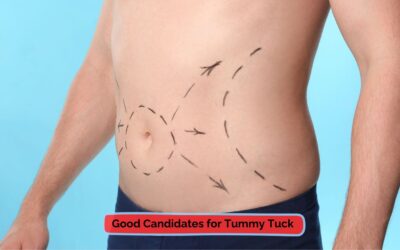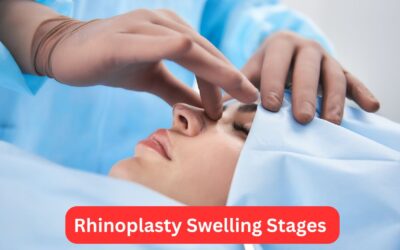Whether you’re looking to improve the function or symmetry of your nose, choosing the best type of rhinoplasty is crucial. Rhinoplasty or nose job, is a procedure that can change the shape, size, and function of the nose.
You may want to undergo rhinoplasty for various reasons, such as improving your:
- Appearance
- Self-confidence
- Breathing
- Health
However, not all nose surgeries are the same! Every nose job surgery in Iran can achieve different results, depending on your goals and needs.
In this blog, we will help you find the best types of nose jobs for you by explaining the pros and cons of each option, as well as providing some examples of cases where they may be suitable.
What is Rhinoplasty?
Rhinoplasty is a surgical procedure that aims at reshaping and refining your nose. It can address a range of concerns, including:
- Reducing or increasing the size of the nose
- Altering the shape of the tip or bridge
- Correcting a deviated septum
- Improving breathing difficulties
It’s important to consult with a qualified surgeon who can recommend the most suitable type of rhinoplasty for you.
Types of Rhinoplasty
There are several types of nose job surgeries for different medical and cosmetic issues. The main types of nose rhinoplasty are:
Open Rhinoplasty
Open rhinoplasty is a type of nose surgery that involves making a small incision across the columella, which is the strip of skin between the nostrils. This allows the surgeon to lift the skin and soft tissue off the nose and access the underlying nasal structures, such as the cartilage and bone.
The surgeon can then reshape, resize, or reposition these structures to create the desired outcome. Open nose surgery is usually performed under general anesthesia and takes about 1.5 to 3 hours to complete.
Open Rhinoplasty Pros
This procedure can provide more precise and accurate results, as the surgeon has better visibility and control over the nasal structures. It can also allow the surgeon to correct complex deformities or breathing problems, such as a deviated septum, a crooked nose, or a collapsed nasal valve.
Open Rhinoplasty Cons
Open rhinoplasty can have a longer recovery time as it involves more swelling, bruising, and discomfort. It can also leave a small scar on the columella, which may be visible in some cases. Additionally, open rhinoplasty can have a higher risk of infection or bleeding, as it exposes more of the nasal tissues to the environment.
Some examples of cases where open rhinoplasty may be the best option are:
- Severe nasal trauma or injury: If the nose has been severely damaged by an accident, a disease, or a previous surgery, open rhinoplasty can help restore its function and appearance.
- Significant nasal asymmetry or deviation: If the nose is noticeably crooked or uneven, open rhinoplasty can help straighten and balance it.
- Revision rhinoplasty after previous surgery: If the nose has been operated on before, but the results are unsatisfactory or have changed over time, open rhinoplasty can help improve them. The surgeon can use open rhinoplasty to correct any complications, such as scarring, breathing difficulties, or aesthetic issues, that may have occurred after the previous surgery.
Closed Rhinoplasty
Closed rhinoplasty is a type of nose surgery that involves making incisions inside the nostrils, without affecting the columella. This allows the surgeon to access the nasal structures through the nostrils and modify them as needed. Closed rhinoplasty is usually performed under local or general anesthesia and takes about one to two hours to complete.
Some of the pros and cons of this method are:
Closed Rhinoplasty Pros
This approach can have a shorter recovery time as it involves less swelling, bruising, and discomfort. It can also leave no external scars, as the incisions are hidden inside the nostrils. Additionally, this procedure may have a lower cost.
Closed Rhinoplasty Cons
It can have less visibility and control over the nasal structures, as the surgeon has to work through the nostrils. This method can also make it harder to correct complex deformities or breathing problems, as it limits access to the nasal structures. Furthermore, closed rhinoplasty can have more limited changes possible, as it restricts the amount of tissue that can be removed or added.
Some examples of cases where closed rhinoplasty may be the best option are:
- Minor nasal hump or bump: If the nose has a small bump or hump on the bridge, closed nose surgery can help smooth and refine it.
- Slight nasal tip refinement: If the nose has a subtle issue with the tip, such as a lack of definition, projection, or rotation, closed rhinoplasty can help enhance and improve it.
- Subtle nasal reshaping or resizing: If the nose has a minor problem with the overall shape or size, it can help adjust and optimize it.
Tip Rhinoplasty
Tip plasty is a type of nose surgery that involves making incisions inside the nostrils and focusing only on the nasal tip. This allows the surgeon to modify the shape, size, and position of the tip cartilage. This surgery is usually performed under local or general anesthesia and takes about 30 minutes to an hour to complete.
Some of the pros and cons of tip plasty are:
Tip Plasty Pros
Tip plasty can have minimal downtime, as it involves the least amount of trauma and disruption to the nose. It can also leave no changes to the nasal bridge or bones, as it only affects the nasal tip. Additionally, tip plasty can have more natural-looking results, as it preserves the original character and identity of the nose.
Tip Plasty Cons
Tip rhinoplasty can only affect the nasal tip, as it does not address the nasal bridge or bones. It may not improve breathing or function, as it does not correct any structural or functional issues in the nose. Moreover, tip plasty may not achieve dramatic changes, as it only makes subtle modifications to the tip. It may also require additional procedures for balance, as it may create a mismatch between the tip and the rest of the nose.
Some examples of cases where tip plasty may be the best option are:
- Bulbous or droopy nasal tip: If the nose has a tip that is too large, round, or saggy, tip plasty can help reduce and lift it.
- Upturned or hooked nasal tip: If the nose has a tip that is too high or low, tip plasty can help lower or raise it.
- Wide or narrow nasal tip: If the nose has a tip that is too wide or narrow, tip plasty can help widen or narrow it.
Non-Surgical Rhinoplasty
Non-surgical rhinoplasty, also known as liquid rhinoplasty or nose filler, is a type of nose enhancement that involves injecting dermal fillers into the nose. Dermal fillers are gel-like substances that can add volume, smoothness, and contour to the nose. Surgeons usually perform non-surgical rhinoplasty under topical anesthesia and it takes about 30 minutes to 1 hour to complete.
Some of the pros and cons of non-surgical rhinoplasty are:
Non-surgical Rhinoplasty Pros
Non-surgical rhinoplasty does not require surgery or anesthesia, as it involves only injections. It is a quick and easy procedure, as it can be done in a single session. It also has minimal pain and discomfort, as it involves only a few needle pricks. Additionally, non-surgical rhinoplasty has reversible and adjustable results, as the fillers can be dissolved or modified if needed. It also has a lower cost, as it does not involve any surgical fees or materials.
Non-surgical Rhinoplasty Cons
Non-surgical rhinoplasty has temporary results, as the fillers can last from 6 months to 2 years, depending on the type and amount used. It also has limited changes possible, as it can only add volume, not remove or reposition tissue. It may not improve breathing or function, as it does not correct any structural or functional issues in the nose. Furthermore, non-surgical rhinoplasty has a higher risk of allergic reactions or infections, as the fillers can cause inflammation, swelling, or infection in the nose.
Some examples of cases where non-surgical rhinoplasty may be the best option are:
- Small nasal hump or bump: If your nose has a slight bump or hump on the bridge, non-surgical rhinoplasty can help camouflage and smooth it.
- Minor nasal asymmetry or deviation: If the nose has mild crookedness or unevenness, non-surgical rhinoplasty can help correct and balance it.
How to Choose the Best Type of Rhinoplasty?
Finding the best method and doctor for your rhinoplasty in Iran can be a challenging and confusing task, as there are many factors to consider. These factors are your goals, needs, preferences, anatomy, budget, and expectations.
The most important thing is to consult with an experienced surgeon who can assess your nose and recommend the best type of nose job for you.
You can benefit from our free online consultation session and discuss with one of the best rhinoplasty surgeons in Iran to make your decision.





0 Comments